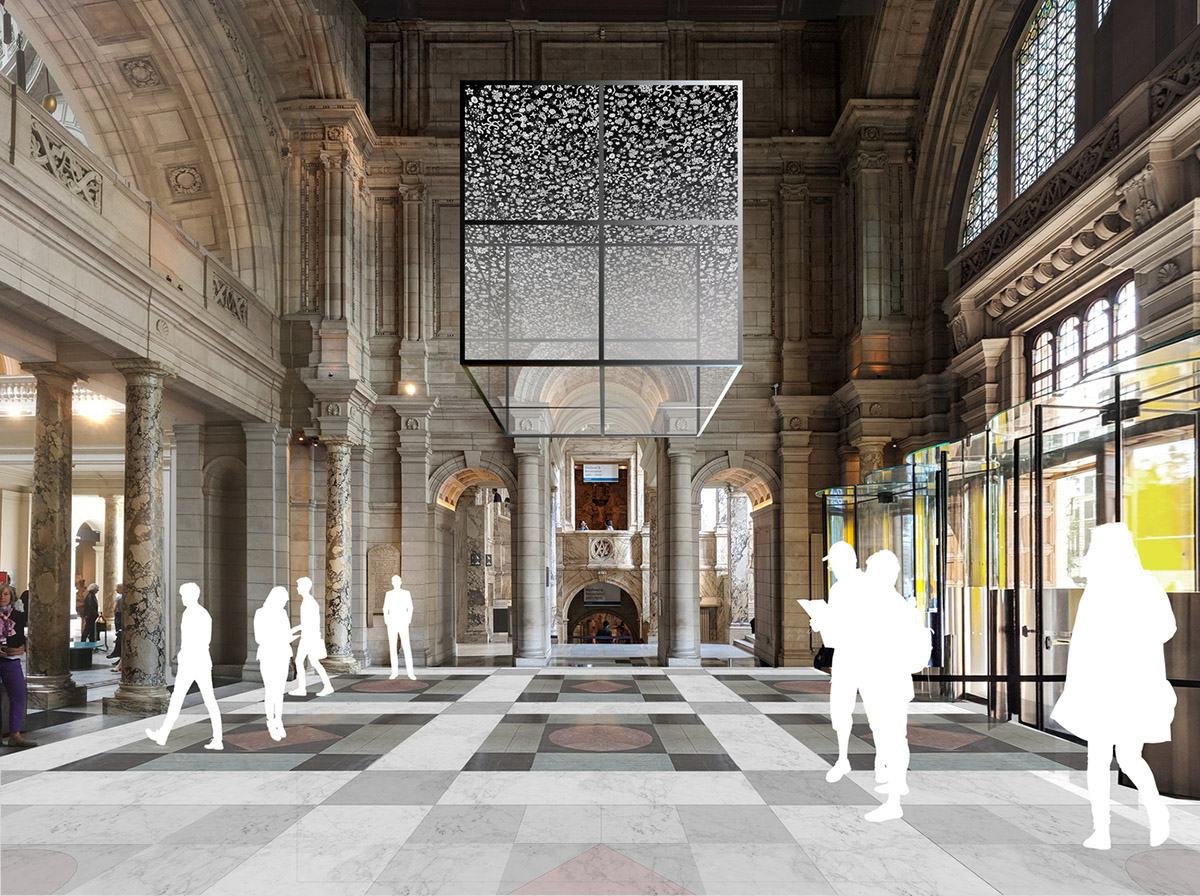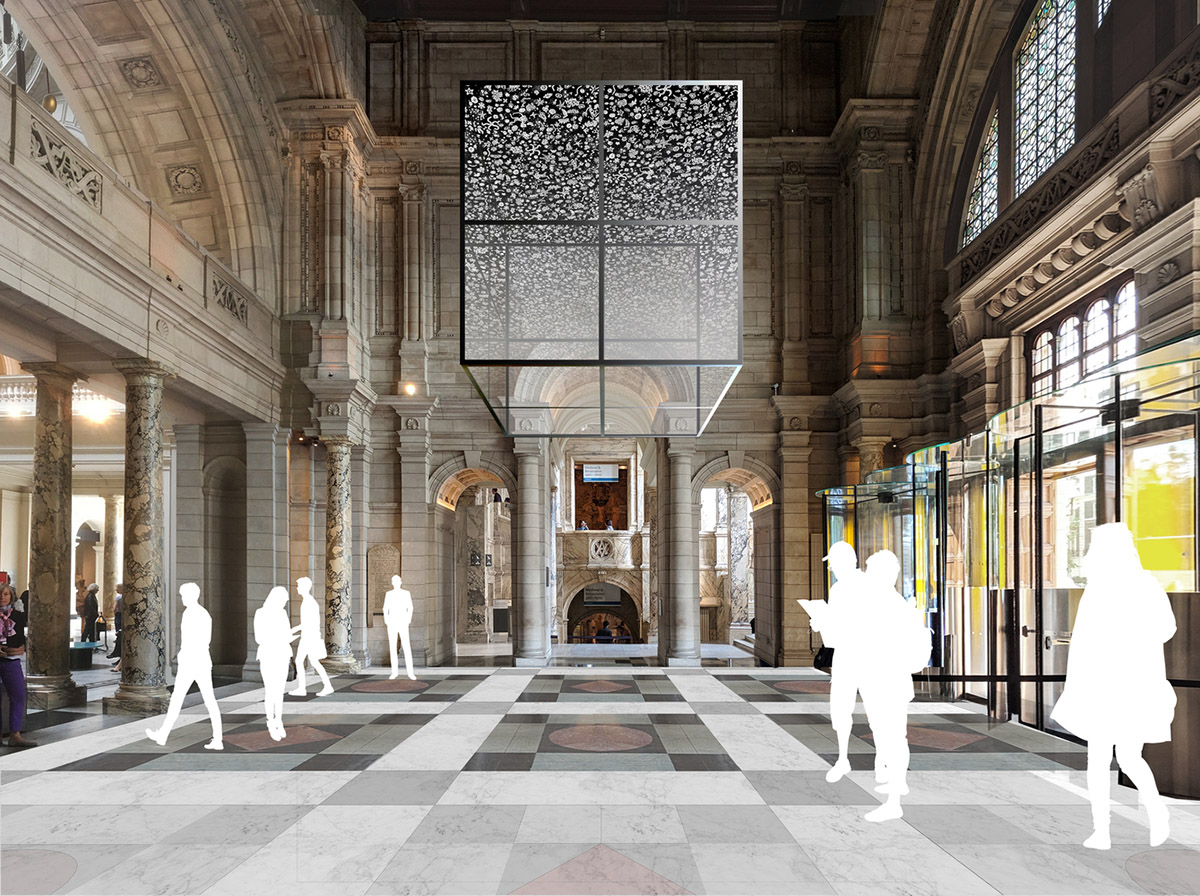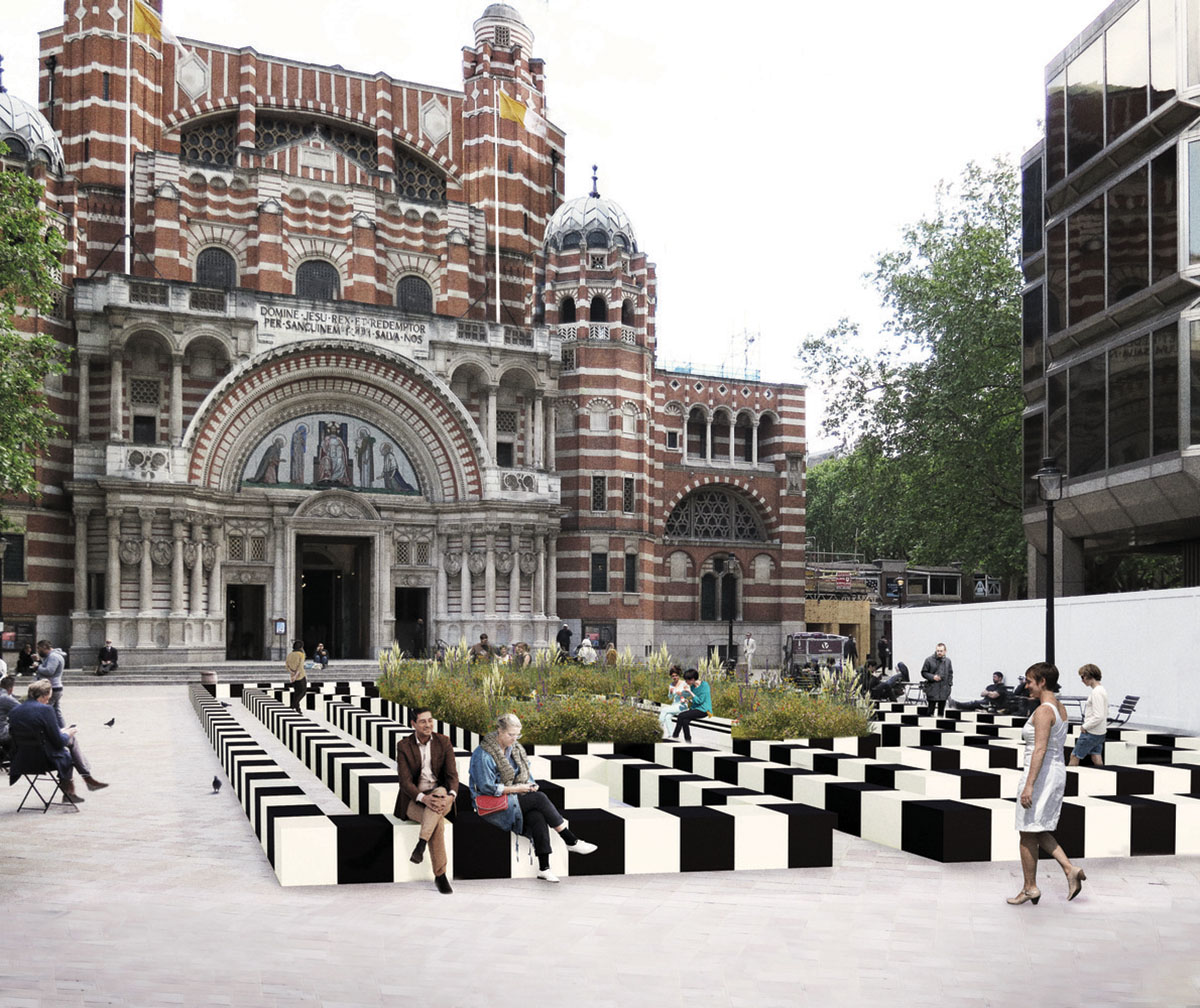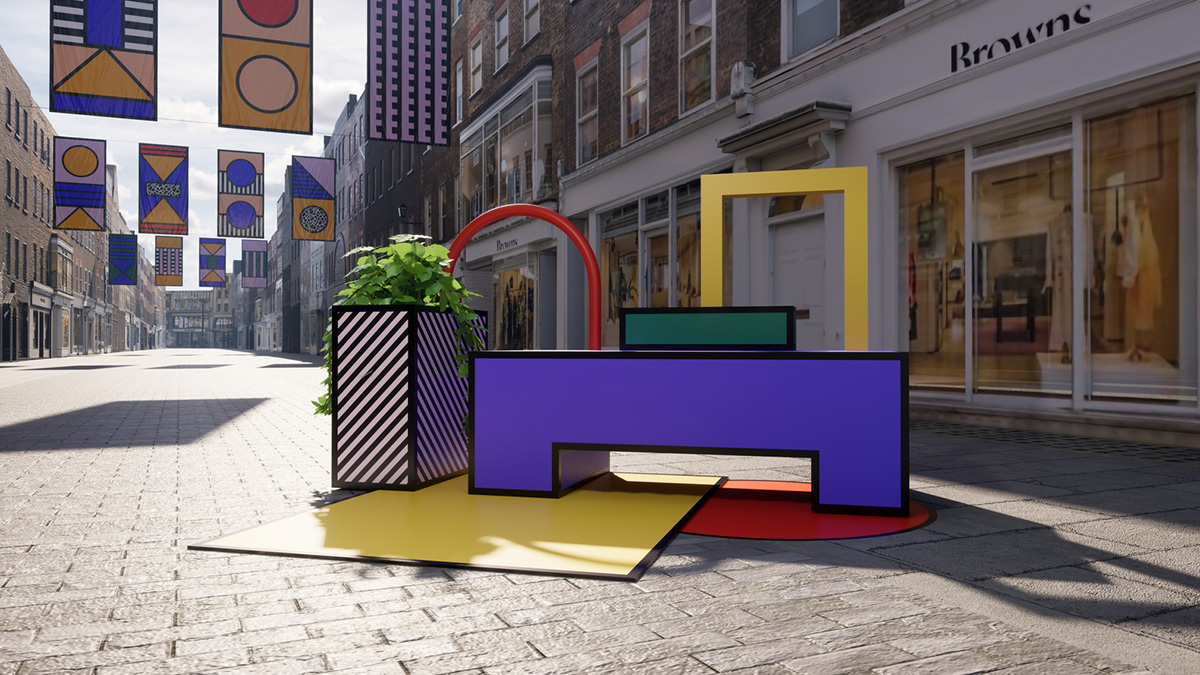Submitted by WA Contents
8 Installations That Shouldn't Be Missed at London Design Festival 2019
United Kingdom Architecture News - Aug 21, 2019 - 04:49 12510 views

Less than one month left for the 2019 London Design Festival and the Festival has unveiled its design installations, including Kengo Kuma, Sam Jacob, Paul Cocksedge, Camille Walala and more. The installations include Landmark Projects, V&A Projects, Festival Commission Projects and Special Projects.
The 17th edition of the Festival will be running from 14 to 22 September 2019 with a programme of citywide activity in the districts and destinations, showcasing local and international design talent.
London Design Festival takes over the capital with a nine-day celebration, comprising over 400 different events, exhibitions and installations. As a citywide event, Design Districts and Design Destinations play a key role in the Festival, curating an ambitious programme of projects across London, allowing visitors and Londoners an opportunity to experience, discover, and be inspired by world class design.
In 2019, there will be 11 official Design Districts from East to West; North to South. Design Districts are areas where there are distinct concentrations of design activity and events that can be traversed easily on foot. Each District is organised independently via the platform of London Design Festival and reflects the unique character of its locale. This year will see two new Design Districts taking part in the Festival, Kings Cross Design District and Chelsea Design District.
Established in 2003 by Sir John Sorrell CBE and Ben Evans CBE, London Design Festival celebrates and promotes London as the design capital of the world.
"Most cities are experts in one or two disciplines, but the breadth and depth of London’s expertise is unparalleled. London Design Festival provides a platform for creative talent to tell their stories, and the variety of the Festival Districts and Destinations is testament to what our city has to offer," said London Design Festival Director, Ben Evans CBE.
Each intervention will add an exciting new dimension to the city’s streets and iconic spaces, exploring the power of design to shape our world and demonstrating the role it plays in how we live, feel and solve problems.
To help you to make your own agenda, WAC Editors have picked up 8 installations that you shouldn't miss at the 2019 London Design Festival. Scroll down to see the most striking designs at the LDF 2019.

Image courtesy of Sam Jacob
Sea Things by Sam Jacob (Landmark Project)
Sam Jacob is designing a new installation within the grand entrance to the V&A to highlight the need to rethink the global plastics system; to consider it’s full lifetime journey; and to design future-use into every product. The installation for London Design Festival follows the recent announcement that Sam Jacob Studio has been selected to transform the Cromwell Road entrance.
Titled SeaThings, the concept is inspired from a pattern by Charles and Ray Eames in the V&A’s Textiles and Fashion collection, will take the form of a large scale two-way mirrored cube suspended above visitors with an animated motion graphic internally reflected to an infinity that seems both as wide as the ocean and as large as the challenges we face. Visitors entering the impactful space will feel transported and entirely absorbed by the installation, which is both a digital and physical manifestation of the global single-use plastics crisis.
In addition, Jacob will remake seven water vessels from the V&A’s Collection. From recycling to experimental post plastic materials, the intervention will emphasise issues of value -the design of water vessels in global culture and history, along with the value of plastic itself – whilst demonstrating the potentials and opportunities for the future.
The project's aim is to evoke a powerful sense of emotion, so visitors come away feeling empowered with a better understanding of their role alongside technology and design to make the world a more sustainable place.

Bamboo (竹) Ring: Weaving into Lightness by Kengo Kuma at John Madejski Garden, V&A. Image courtesy of Kengo Kuma
Bamboo (竹) Ring: Weaving into Lightness by Kengo Kuma (V&A Project)
Inspired by the John Madejski Garden and curated by Clare Farrow, the doughnut-shaped structure – like a nest or cocoon – has been created by weaving rings of bamboo and carbon fibre together. For Kuma, working with Ejiri Structural Engineers and the Kengo Kuma Laboratory at The University of Tokyo, the installation is an exploration of pliancy, precision, lightness and strength: by pulling two ends, it naturally de-forms and half of the woven structure is lifted into the air.
Bamboo has been used traditionally in Japanese architecture in part due to its linearity and flexibility, and as a symbol of strength and rapid growth. The basic component of the structure – a 2m-diameter ring – is made from strips of the bamboo Phyllostachys edulis. By combining carbon fibre, a contemporary material, with the ancient material of bamboo and laminating each ring, the resulting effect achieves a certain rigidity while maintaining the unique material properties and beauty of bamboo – a remarkable, sustainable material that resonates with Kuma’s childhood memories and looks into the future of architecture.
Bamboo (竹) Ring, or ‘Take-wa 竹わ’, has the ambition to become a catalyst for weaving people and place together.

Paul Cocksedge's Please Be Seated. Image courtesy of Paul Cocksedge
Please Be Seated by Paul Cocksedge (Landmark Project)
British designer Paul Cocksedge is transforming Finsbury Avenue Square with Please Be Seated. Located in the heart of Broadgate, the Landmark Project will be the most ambitious of British Land’s commissions to date.
The large-scale installation fuses innovation and technology, and responds to the changing rhythm of the community: its design features curves for people to sit on and walk under, further enhancing London’s largest pedestrianised neighbourhood. The work is made from scaffolding planks, and Cocksedge has collaborated with Essex-based high-end interiors company White & White to re-imagine and re-use the building wood.

Life Labyrinth by Patternity at Westminster Cathedral Piazza. Image courtesy of Patternity
Life Labrinth by Patternity (Festival Commission Project)
The Life Labyrinth – designed by cult design and experiential studio Patternity - brings to life the healing powers of one of the most ancient geometric symbols on Earth. Based on a giant three-dimensional spiraling labyrinth formation, The Life Labyrinth is a pattern-based journey that takes visitors on a personal meditative walking experience that is proven to have both psychological and physical health benefits. Surrounded with plants and graphic shapes, the space is a destination for quiet contemplation, creative inspiration and reconnection to self amidst the hustle and bustle of London life.
Visitors are invited to switch off and meander slowly through the installation to the centre of the installation, then journey back out again, venturing through wild grasses, flowers and gentle sounds which celebrate nature, beauty and connection in the heart of the city.
Patternity’s bold monochrome style will reflect the brickwork of the Cathedral and the communal seating pays homage to the geometries of the Abbey architecture. Taking inspiration from the healing principles of harmony and flow –the space is designed to soothe the senses and invoke positive thought. Through the power of pattern, movement, sound and nature, the installation will invite visitors to meditate upon and enjoy the Piazza in a unique and visceral way.

Image courtesy of Dan Tobin Smith + The Experience Machine
VOID by Dan Tobin Smith + The Experience Machine (Festival Commission Project)
Visitors will become part of an immersive experience, travelling through a series of large-scale projections that showcase the expanded space inside gemstones and map the blurring boundaries between nature and design. A selection of Mozambican rubies and Zambian emeralds from Gemfields’ mines, which date back millions of years, are brought to life through photography of tiny microcosms magnified to become abstract, galaxy-like structures
Accompanied by other semi-precious gems created in rare geological processes, these unique mineral formations are discovered, suspended and frozen in time. The installation considers the concept of containment and scale, employing spatial design to explore the natural borders formed within these unique mineral formations.
By translating moving image into a contained physical form and scoring the experience with harmonised layers of the human voice – by female electronic drone choir NYX – visitors are invited to enter within the portrait of a gemstone’s natural inclusion.

Image courtesy of Sony Design
Affinity in Autonomy by Sony Design (V&A Project)
Sony Design's Affinity in Autonomy will present an interactive robotic pendulum, translating innovation into perceptual experiences. The independence and free will of robotics is portrayed by the pendulum’s random movements. Human presence can be detected and recognition is reflected in the kinetic motion. Exhibiting a rich, dynamic and autonomous behaviour, this conceptual piece engages visitors seeking an emotional and physical response. The work endeavours to portray emotion and sensitivity, illustrating the enriched relationship possibilities for a new tomorrow.
Affinty in Autonomy represents thoughts on the future of artificial intelligence and robotics: envisioning a world in which intelligence, technology and creative design are more integrated. Sony Design believes that the relationship between humans and technology will evolve through deeper understanding of AI and its ability to display feelings.

Image courtesy of Volume Creative
Take the Plunge by Volume Creative (Special Project)
Volume Creative, in collaboration with Virgin Voyages, invites visitors to Take the Plunge: a playful installation at The Bargehouse, Oxo Tower Wharf. The interactive project shows the power of design to evoke curiosity, in a stand-alone immersive experience created for London Design Festival. Visitors are invited on a journey of discovery and asked to dive into a new experience. The minimalist exterior juxtaposes with the warmth that awaits within.
Visitors step into an endless horizon, giving way to an extraordinary secondary space that depicts a sunset under the sea. The concept is inspired by a love of the sea – the great unknown with the promise of epic discoveries. Take the Plunge hints at this spirit of adventure and celebrates the endless possibilities of great design, using multi-sensory techniques to capture the joyful elements of an oceanic journey.

Image courtesy of Camille Walala
Walala Lounge by Camille Walala (Special Project)
Walala’s vision is to create an open-air urban living room – a place for people to come together to chat and relax in central London – with a burst of colour and irrepressible joy. The Walala Lounge will comprise an unpredictable array of cuboids, cylinders and arches made from brushed steel and Tricoya® MDF, while a number of the designs incorporate planters and rug-like bases to enhance their engaging, home-like appeal.
Combining head-turning colour and geometric shapes in monumental proportions, the result is Walala Lounge, a set of 10 sculptural benches, accompanied by planters – some freestanding and some integrated into the structure of the benches – and a series of oversized flags that will be strung, bunting-style, from shopfront to shopfront, converting the area into an immersive corridor of colour.
Fully pedestrianised and lined with British and international boutiques and cafes, South Molton Street will be transformed into a place to pause.
Top image: Sea Things by Sam Jacob (Landmark Project), courtesy of Sam Jacob
> via London Design Festival
